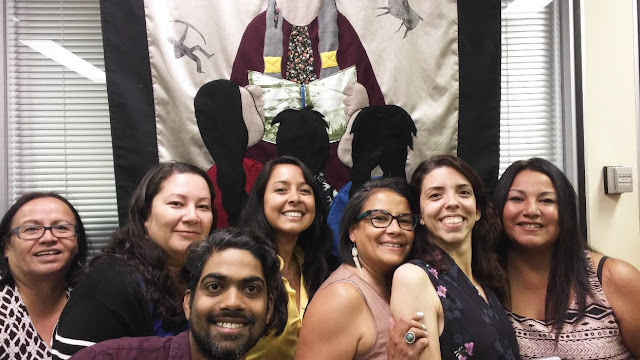By Nana Araba Asaam, 2nd year MDP student
The end of the seemingly long road is
finally here! I cannot believe how fast these months have gone by. When I
started the MDP program, I always wondered when it would end or if I would even
be able to complete this journey successfully. Well, almost two years later, I
find myself writing about my final field placement experience which crowns this
most wonderful journey. To my cohort, I will miss you guys! All the best in
your future endeavors!
I have had a great time this past 12
weeks with the Manitoba Canadian Red Cross (MB CRC). Before signing on to work
as a practicum student, I had established a relationship with Red Cross as a
volunteer so I had the confidence that I would gain something valuable at the
end of the placement and I was quite right. The Canadian Red Cross is one of the
largest humanitarian organizations in the world whose mission is to improve the
lives of vulnerable people by mobilizing the power of humanity in Canada and
around the world. What attracted me to this organization is the diverse
opportunities given to people to voluntarily demonstrate their caring for
others in need. Since this is what I
have always been interested in and what the MDP is all about, I saw working
with MB CRC as an opportunity to demonstrate how important it is to me to care
for others in need.
Within the MB CRC I worked with the Disaster Management (DM) Program. This is the program that prepares for and manages the organization’s response to disasters throughout all of Canada. A cornerstone activity during response is the delivery of services to clients, to provide relief immediately following a disaster, and to support recovery efforts for extended periods of time. During the first few weeks with DM, I responded to the Manitoba flooding which affected numerous communities including Peguis, Long Plain, Sioux Valley, and Canupawakpa First Nations.
I was further tasked to work on the First
Nation communities demographic and disaster preparedness survey which required
me to precisely apply my research skills gained from the MDP program. This
survey is intended to help DM know more about all 63 First Nation communities
in Manitoba, how resilient and prepared they are to handle disasters such as
floods, fires and tornados that may threaten their safety and lives when they
occur. Working on this project, I learned a lot more about First Nation
communities through face to face and over the phone conversations with
community leaders and members.
Within the MB CRC I worked with the Disaster Management (DM) Program. This is the program that prepares for and manages the organization’s response to disasters throughout all of Canada. A cornerstone activity during response is the delivery of services to clients, to provide relief immediately following a disaster, and to support recovery efforts for extended periods of time. During the first few weeks with DM, I responded to the Manitoba flooding which affected numerous communities including Peguis, Long Plain, Sioux Valley, and Canupawakpa First Nations.
 |
| Emergency Response Operation Centre |
I also worked on the Ready
When the Time Comes (RWTC) project which involved searching for organizations
who would be willing to lend their workers as volunteers to help provide
emergency relief when a large-scale disaster occurs. RWTC trains employees and
members of MB CRC partnering corporations and organizations to become disaster
response reservists. This means in the event of a large-scale disaster these
individuals are called upon to provide the Red Cross team with response
assistance. The purpose of this program is to develop an emergency preparedness
and response culture by increasing the volunteer capacity of the Red Cross.
This was a very important project that demanded that I use diligent decision
making skills to determine which organization was to be partnered with.
To broaden the scope of my experience
with MB CRC, I also accepted to work with the Respect Education program. This
program works to create safe environments free of violence – abuse, bullying,
exploitation – through prevention education and response. The focus of the
program is on children and youth. To keep
young people safe, Respect Education informs adults, youth and children, and
works with individuals of all genders, backgrounds and status.
 |
| CRC Mission Statement |
The rest of the summer I responded to the
Manitoba fires which threatened the safety of Poplar River First Nation as well as other neighboring communities. I encourage all my friends,
cohort, and anybody who is reading this to volunteer for CRC to contribute to
the success of its mission. I can guarantee that doing this would bring inner
satisfaction, peace and joy.






